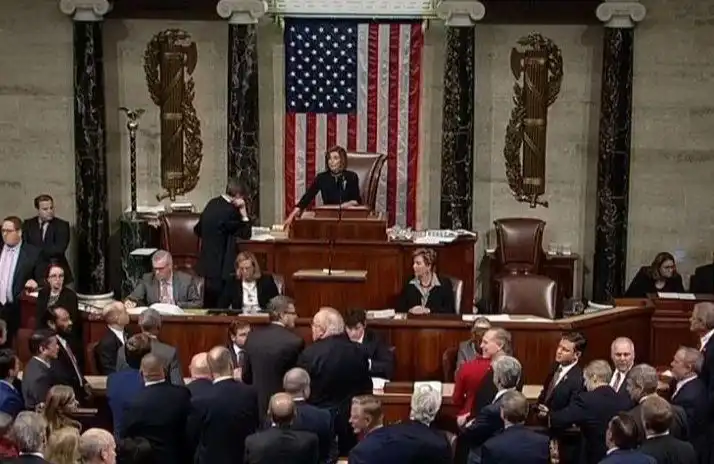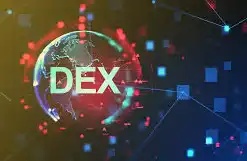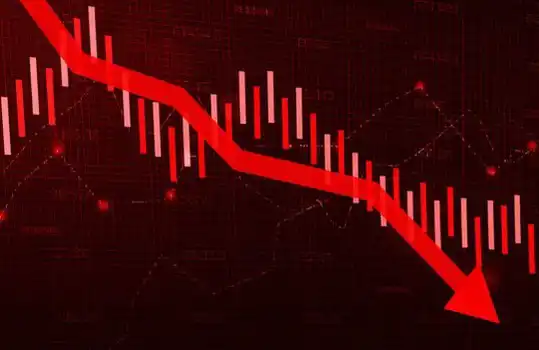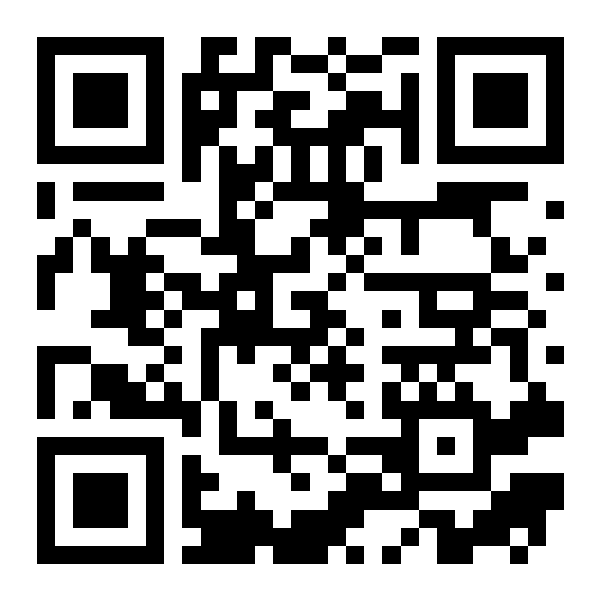IOSG: Exploring the Prediction Market and Its Competitive Landscape through Kalshi
Original Article Title: "IOSG Weekly Brief | Exploring Prediction Markets and Their Competitive Landscape Through Kalshi #284"
Original Article Author: Mario, IOSG Ventures
Background
Prediction Markets are a type of speculative market where trading is based on the outcome of future events. The core function is to aggregate dispersed information through contract prices. Under certain conditions, the price of a contract can be interpreted as a probability forecast of the event occurring. Since the 1980s, a large body of research has shown that Prediction Markets are highly accurate, often outperforming traditional forecasting methods such as polls or expert opinions. This predictive ability stems from the "wisdom of crowds": anyone can participate in the market, and traders with better information have economic incentives to engage in trading, thereby driving prices towards the true probability. In essence, a well-designed prediction market can efficiently integrate a large number of individual beliefs into a consensus estimate of future outcomes.
The modern origins of prediction markets can be traced back to some pioneering experiments in the late 1980s. The first academic prediction market was the Iowa Electronic Markets (IEM) founded at the University of Iowa in 1988.
IEM is a small-scale real-money market (each person's betting amount is limited to around $500 by the regulatory authority), mainly focused on the outcomes of U.S. elections. Despite its small scale, the IEM has demonstrated impressive predictive accuracy over the years. In the week before the election, the market predicted an average absolute error of 1.5 percentage points for the vote share of Democratic and Republican candidates, compared to Gallup's final poll error of 2.1 percentage points during the same period. The following chart also shows that as the election day approaches and more information is absorbed by the market, the predictive accuracy continues to improve.
At the same time, some forward-looking concepts about using markets to predict uncertain events were gradually taking shape. Economist Robin Hanson proposed the concept of "Idea Futures" in 1990, which involved establishing an institution for people to bet on scientific or social propositions. He believed this could form a "visible expert consensus" and incentivize honest contributions through rewarding accurate predictions and penalizing incorrect judgments. Essentially, he saw prediction markets as a mechanism to resist bias and promote truth revelation, applicable to fields such as scientific research and public policy. This concept (i.e., "Idea Futures Markets") was highly visionary at the time and laid the foundation for the theoretical expansion of prediction markets.
Entering the 1990s, some online prediction markets began to emerge, covering both real-money markets and the "virtual currency" market. The academic market at the University of Iowa continued to operate, while the "virtual currency" market gained more attention among the public. For example, the Hollywood Stock Exchange (HSX) was founded in 1996, serving as an entertainment prediction market where virtual currency was used to trade "shares" of movies and actors.

HSX proved to be very successful in predicting movie opening weekend box office numbers and even Oscars, sometimes outperforming professional film critics. In 2007, HSX players accurately predicted 32 out of 39 Oscar nominations and hit 7 out of 8 major award winners. HSX is considered a classic case of a prediction market.

Theoretical Foundations and Market Mechanism Design
The basic mechanism of a prediction market is to create an incentive-compatible structure that motivates market participants to reveal their true information. Since traders have to bet real money (or virtual currency), they tend to trade based on their genuine beliefs and private information.
From an economic perspective, a well-designed market should allow traders to maximize their expected returns by quoting prices that are consistent with their subjective probabilities.
In terms of manipulation prevention, academic research has found that prediction markets exhibit strong resilience to price manipulation behavior. Attempts to deviate prices from fundamentals usually create arbitrage opportunities for other more rational traders, who would choose to trade on the opposing side, bringing the price back to a more reasonable level. Empirical data shows that manipulation behavior is often swiftly corrected and may even help enhance market liquidity. In other words, those trying to manipulate the market often end up subsidizing the "smart money" traders, and the market price eventually reflects the true information state.
Kalshi
Kalshi is a federally regulated prediction market exchange where users can trade on the outcomes of real-world events. It is the first exchange to receive approval from the U.S. Commodity Futures Trading Commission (CFTC) and offers Event Contracts. Event Contracts are binary futures (yes/no), with the contract being worth $1 if the event occurs and $0 if it does not.
Users can buy or sell "Yes"/"No" contracts priced between $0.01 and $0.99, where the price represents the market's implied expectation of the event's probability.
If the prediction is correct, the contract settles at $1, and the trader can profit from it. Kalshi itself does not hold positions (unlike a betting site; it is not a house), it only serves as a matching platform to match the long and short sides, earning revenue through trading fees.
Market Creation Process
Proposal and Approval
A new event market (yes/no binary contract) can be proposed by the Kalshi team or users through "Kalshi Ideas." Each proposal has to go through an internal review and must comply with CFTC regulatory standards, including a clear event definition, objective settlement conditions, and permissible event categories.


Contract Accreditation
Once approved, the event is officially launched within Kalshi's Designated Contract Market (DCM) framework, with documents outlining contract specifications, trading rules, and settlement standards.
Trading Launch
After the event market is launched, U.S. users can trade through Kalshi's app, website, or integrated platforms with brokers like Robinhood and Webull.
Initial Liquidity and Pricing
Order Book Mechanism
When a new market starts, the order book is empty, and any user (liquidity provider or regular trader) can place limit orders (e.g., buying "yes" at $0.39 or selling "no" at $0.61).

Liquidity Provider Incentives
To incentivize liquidity, the order placer (maker) is usually fee-free, although some special markets may have very low fees.
Price Discovery
Prices fluctuate dynamically with supply and demand, reflecting the market's consensus on the event probability. For example, if someone buys "yes" at $0.60 and another sells "no" at $0.40, after the system matches them, the contract is created with each party putting in $0.60 and $0.40, totaling $1.
Market Settlement Mechanism
Outcome Confirmation
Event outcomes are determined based on a pre-specified authoritative data source (such as government reports, official sports results).

Automatic Settlement
If an event occurs, users holding the "Yes" contract automatically receive $1 per share in profit; otherwise, the "No" side wins, and the losing side's contract is worth zero. There are no additional settlement fees.

Fee Structure
Setting: P = Contract Price, C = Number of Contracts

Polymarket


Polymarket Overview: Polymarket is a decentralized prediction market platform built on Polygon, where users can trade binary outcome tokens (Yes/No Tokens) corresponding to event results. It utilizes the Conditional Token Framework (CTF), with each pair of outcome tokens fully collateralized in a stablecoin (USDC) and employs a hybrid central limit order book (CLOB) trading mechanism for efficient matching. Market settlement is achieved through UMA's Optimistic Oracle, a disputable decentralized resolution system.
Conditional Token Framework (CTF) and Outcome Tokens
Polymarket uses Gnosis's Conditional Token Framework to represent each market outcome as a conditional token deployed on the Polygon chain. For a binary market, two ERC-1155 Tokens are generated, such as the Yes Token and No Token, both collateralized with an equal amount of USDC.

Splitting 1 USDC will generate 1 Yes + 1 No Token, and merging Yes/No Tokens can unlock and redeem 1 USDC, ensuring full collateralization of each token pair. At the event's conclusion, only tokens corresponding to the correct result are worth $1, while tokens for the incorrect result are worthless.

Hybrid Order Book Architecture (CLOB/BLOB)
Polymarket uses a hybrid architecture called Binary Limit Order Book (BLOB) to combine off-chain order management with on-chain settlement. Users sign orders offline, and operational nodes search for matching orders. If a match is found, the on-chain economic exchange is executed via a smart contract.

Order Lifecycle
· Users sign an EIP-712 order off-chain (e.g., Buy YES @ $0.62)
· Operational nodes maintain the offline order book
· When a matching order is found, operational nodes submit the match result to the Exchange.sol contract
· On-chain execution of an atomic swap for settlement
Atomic Swap Example
· Buy vs. Sell: One person buys Yes at $0.40, while another person sells Yes at $0.40. The contract facilitates the exchange of USDC and Yes tokens
· Buy vs. Buy: Two users swap Yes/No tokens, and the contract extracts a total of $1 from both parties, splitting it into Yes/No tokens for each user
· Sell vs. Sell: Two users simultaneously sell Yes/No, consolidating the tokens to return the collateral
· Supports partial fills, multiple order matching, discounts, bulk trades, and ensures atomic execution
UMA Optimistic Oracle
Unlike traditional exchanges that rely on internal arbitration or data sources, Polymarket leverages UMA's Optimistic Oracle, which relies on community consensus.
After the event concludes, anyone can submit a result revelation proposal for the market and stake a bond to enter a disputable period

If there is no dispute, the result is accepted; if there is a dispute, it is resolved through a UMA community vote

Kalshi vs Polymarket: Structural and Technical Comparison
Polymarket's total platform volume across all markets (including politics, technology, entertainment, etc.) in June was $1.16 billion, slightly higher than Kalshi's approximately $800 million.



Market Expansion Strategy / Growth Momentum
Academic Insight: "Gambling Tendencies of Cryptocurrency Tokens"
A recent peer-reviewed study titled "Gambling on Crypto Tokens?" provides compelling evidence of the relationship between crypto assets and gambling behavior. The researchers used Google Trends to proxy retail investor interest, revealing several significant patterns:
1. Per Capita Lottery Sales Can Predict Interest in Cryptocurrency Tokens
The Google Search Volume Index (SVI_{i,d}) represents the attention a specific token offering (ICO) or NFT project i received in a designated market area (DMA) d upon release. The key coefficient β₁ in the regression model measures the impact of gambling tendencies in that area on crypto asset interest. f(X_d) denotes potential area control variables that may influence ICO or NFT interest.
The main explanatory variable X_d in the model is per capita lottery sales and includes interaction terms with token features.

The regression results show that regions in the United States with higher per capita lottery sales exhibit significantly higher Google search activity in the following areas:
Initial Coin Offerings (ICO): Regression coefficients range from 6.28 to 6.88, with a p-value < 0.01, statistically significant.

This indicates a strong behavioral overlap between gamblers and crypto retail investors.
2. Wallet Attention and Investment Outcomes
In regions with high per capita lottery sales, after an ICO or NFT release, wallet activity sees a rapid increase.

During an ICO/NFT release, wallet-related search volume (Wallet SVI) (such as MetaMask, Coinbase Wallet, etc.) spikes more prominently in high lottery sales regions.
These regions also show higher funding amounts, more participants, and a faster NFT minting speed.
3. Legalization of Gambling as a Natural Experiment
Table 7 of this paper leverages the time differences in the legalization of sports gambling across U.S. states as a natural experiment. The results show that after gambling becomes legal in a state, in high lottery sales regions, the crypto-related attention significantly decreases:


The interaction term in the regression model (PostSG × Lottery Sales) exhibits a strong negative relationship and is highly significant.
This implies that there is a "substitution effect" between crypto tokens and gambling behavior—once a legal gambling avenue emerges, speculative interest in crypto assets decreases.
The conclusion of the entire paper is very clear: "Gambling preference can robustly predict retail investors' interest in the crypto market."
Cryptocurrency trading is not just "like gambling"; for some users, it is gambling.
These research findings further validate the comparison between the two and highlight the existence of such users: they have a high-risk preference and seek speculative thrills in casinos or platforms like Coinbase.
Crypto Gambling Market: Stake.com as a Representative Sample
To measure the market's scale, one can look at the rise of native cryptocurrency gambling platforms (supporting only cryptocurrency deposits) such as Stake.com.

In just a few years, Stake has captured the global demand for high-risk, high-reward entertainment, achieving explosive growth:
· Impressive revenue scale: In 2022, Stake hit approximately $26 billion in gross gaming revenue (compared to $1.05 billion in 2020), positioning itself among the world's largest gaming companies. The growth continues—Stake's revenue in 2024 has reached around $47 billion, representing an approximately 80% increase from 2022. For comparison, traditional giants Entain had revenue of about $5 billion in 2024, Flutter reached around $14 billion, and Stake has entered the same league.
· User Scale and Coverage: As of 2023, the platform has over 600,000 active users, despite being blocked in markets like the United States and the United Kingdom. Its user base is mainly concentrated in regions with relaxed online gambling regulations such as Southeast Asia, Japan, Brazil. Hundreds of thousands of users worldwide have surpassed geographical restrictions to flock to a crypto gambling platform, reflecting the suppressed significant demand in the market.
· Global Top Players: Stake's explosive growth has positioned it as the seventh-largest gambling company globally (by revenue), surpassing many traditional sports betting companies. Notably, the revenue of the well-known U.S. gambling platform DraftKings has fallen behind Stake, indicating that the cryptocurrency-driven gambling model is opening up a new market (TAM) that traditional gambling companies find challenging to reach.
Why Prediction Markets Have an Edge Over Traditional Gambling Companies:
Tradeable During Events (Early Payouts / Take Profit)
Prediction markets like Kalshi allow users to buy or sell positions while an event is ongoing, enabling them to lock in gains or losses early (similar to Hong Kong Jockey Club's "Fast Bet" feature), offering the following advantages:
· Actively hedge risks amidst uncertainty
· Dynamically adjust investment portfolios
· Make more flexible speculative decisions
· Traditional gambling companies (Stake, Bet365, etc.)
While some modern gambling companies also offer early settlement features, they are subject to the following limitations:
· Operational control lies with the gambling company, diminishing user agency
· Users may face price slippage or fees
Overall Industry Scale
Stake is just one representative of the crypto gambling market. According to industry reports, the total gambling revenue from crypto casinos has exceeded $81 billion by 2024, despite many countries tightening regulations, proving unable to halt its growth.
This figure represents the gross income generated from cryptocurrency betting, indicating that the intersection of "crypto × gambling" has formed an extremely vast user and fund pool, predominantly flowing to offshore or unregulated platforms.

Stake.com's success clearly demonstrates:
There is a massive market group that:
· Is accustomed to conducting transactions with cryptocurrency;
· Enjoys speculation and high-volatility events;
· Craves to partake in "betting" beyond traditional channels.
These individuals are essentially the core user group of the prediction markets, but currently, they are concentrated on non-regulated platforms like Stake.
A regulated exchange, such as Kalshi, with its robust market structure and compliance, is poised to attract a portion of this user group while providing a compliant stimulating experience. The growth of Stake indicates that if these users migrate to a legitimate platform, the U.S. market's "crypto-flavored" gambling activities could reach an annual Total Addressable Market (TAM) of several billion dollars.
User Overlap: Demographics and Behavior Alignment
This isn't just a theoretical overlap; multiple studies and surveys have confirmed that cryptocurrency traders and gamblers highly coincide in key demographic and behavioral traits.

In many cases, they are the same type of person, even the same person. Some prominent points of overlap include:
Youthful, Male, Risk-seeking: Cryptocurrency trading and sports/casino gambling both skew towards young adult males, who generally have a high tolerance for risk. They chase high-volatility assets and significant returns. A study by Rutgers University indicated that over 50% of monthly gamblers engaged in cryptocurrency trading in the past year, and over 75% of high-risk stock traders also dabbled in crypto. Researchers noted, "Cryptocurrency trading is particularly attractive to those with problematic gambling behavior." In other words, a typical Robinhood crypto day trader (young, thrill-seeking, buying meme coins on a whim) closely resembles a sports bettor or poker player pursuing victory.
Always Online: The cryptocurrency market operates 24/7, offering continuous global trading; online gambling also allows round-the-clock participation, providing a steady dopamine rush. Many individuals who transitioned from gambling to crypto trading mentioned being drawn to the "always-on" nature, especially during weekends or late nights. For the high-frequency, impulsive internet users, both crypto and gambling offer never-ending excitement — there's always a game to bet on, always a coin fluctuating.
Therefore, Kalshi targets precisely those retail users fond of speculation who span both the crypto trading and gambling communities. These users are already engaging in similar behaviors, and the key is to provide a product that can deliver a comparable stimulating experience within a compliant and secure framework. The behavior overlap also implies that Kalshi's marketing should emphasize the thrill of prediction markets (to appeal to gambling users) while highlighting its financial and rational trading attributes (to attract self-aware investors).
The Evolution of the Crypto Narrative: Toward Compliance
Over the past few years, the overall narrative of the crypto industry has undergone a significant transformation, shifting from the 'unregulated' realm of free innovation to an institution-led, regulatory-compliant path. This transition has brought about a favorable competitive environment for regulated platforms like Kalshi, highlighting the strategic value of their regulatory moat (CFTC approval).
Moving Toward Traditional Institutions: The current trend is that large traditional financial institutions and governments are actively engaging with the crypto industry, bringing in reputation and standards. For example, in 2023, the world's largest asset management company, BlackRock, applied for a Bitcoin ETF, sparking optimism in the market for the SEC's potential approval of a spot ETF. In June 2025, the U.S. Senate also passed the Stablecoin Regulation Act (GENIUS Act), establishing federal-level crypto regulations. At the geopolitical level, former U.S. President Trump's team has also proposed crypto-friendly policies such as a 'national Bitcoin reserve.' All these signs indicate that crypto is no longer on the periphery but is being integrated into compliance and the mainstream financial system.
Compliance as a Moat: In this new environment, compliance is the competitive advantage. The industry has shifted from 'move fast and break things' to 'compliance and stability.' Kalshi spent six years obtaining CFTC approval to become a U.S.-based national regulated exchange known as a Designated Contract Market (DCM), allowing it to legally offer event contracts trading in all 50 states, even in states like California or Texas where sports betting is prohibited. This qualification is extremely difficult to replicate. In contrast, Kalshi's crypto-native competitor Polymarket still operates in a regulatory gray area and cannot legally operate in the U.S., making it vulnerable to policy crackdowns. In the current trend of 'institutionalized crypto,' Kalshi's federal regulatory status is itself a selling point, bringing trust, legal clarity, and nationwide access, which are the direction of the industry's development. In short, Kalshi is leading the race in the compliance lane, while other platforms are still striving to catch up.
Kalshi's Strategy: Positioning as 'Trading' Rather Than 'Gambling' + Robinhood Distribution Channel
Kalshi is very cautious in its branding, deliberately avoiding the 'gambling' label and instead positioning itself as a new type of trading platform: offering 'event contracts' as investment tools and holding a regulated exchange license. This strategy is highly forward-thinking:
'We are not a gambling company'—Difference in Language and Model: Kalshi's founders and executives repeatedly emphasize that the platform is a matching exchange and not a house. Unlike a gambling company that acts as the house and bets against users, profiting when users lose, Kalshi is only responsible for matching orders and charging fees (similar to stock trading commissions). A representative of Kalshi stated, 'We are just an exchange… We don't make money based on others' wins or losses.'
CEO Tarek Mansour also questioned: "If we are considered gambling, then the entire financial market should be considered gambling."
This statement encapsulates Kalshi's positioning logic: to view event contracts as financial derivatives. For example, buying a contract on "Will July break the historical high-temperature record" is seen similar to buying crude oil futures or earnings report options, rather than rolling the dice. This language transformation strategy is highly effective, not only optimizing regulatory understanding but also making users more willing to see it as an "investment" rather than a "bet."
Integration with Robinhood: In early 2025, Kalshi announced a partnership with Robinhood. With over 15 million active users, Robinhood is a hub for young retail traders. This collaboration allowed Robinhood to internally launch a "Prediction Markets" feature block, enabling users to directly trade event contracts provided by Kalshi within the app (such as economic data predictions or even sports outcomes). This significantly expanded Kalshi's reach. Robinhood's stock price even rose by about 8% due to this integration, with investors optimistic about its value-adding potential. By embedding within Robinhood's ecosystem, Kalshi avoided high user acquisition costs, seamlessly integrating the prediction market into users' existing asset classes (stocks, options, crypto), achieving product normalization.
Avoiding "Gambling": Kalshi deliberately steers clear of the term "gambling" in its market promotions and media materials. For instance, it refers to contracts as "Yes/No Contracts," and its blogs and educational materials emphasize their predictive function and informational value, rather than the thrill of gambling.
Even in its collaboration with Robinhood, the promotional language focuses on "bringing event trading to the masses," without using any gambling terms. This subtle branding strategy serves both regulatory compliance and dispelling any gambling stigma among users. By packaging the prediction market as a "trading experience," Kalshi has attracted a wider range of users — including those who enjoy speculation but prefer to see themselves as engaged in "rational investing."

The line between gambling and trading has always been blurry. As a student of quantitative finance, we are often taught that market fluctuations follow a random walk, akin to Brownian motion. But this raises a question: If trading is driven by volatility, speculative psychology, and emotions, is it really that different from gambling? If you bet on a high-risk event with a positive expected value, is that still considered gambling? According to the "Gambler's Ruin" theory, a gambler who continues to increase their bets without reducing them in losses, even if each bet has a positive expected value, will eventually go bankrupt. So, are we all "sophisticated gamblers"?

The data is clear: Crypto retail investors and gamblers are not only similar, but often the same group of people.
Kalshi does not need to choose between these two types of users; it can serve both simultaneously. Whether it's the "smart trader" executing arbitrage strategies or the "entertainment player" predicting sports outcomes, Kalshi provides a regulated, legitimate market environment where these behaviors can coexist.
By abstracting away the "gambling" label and embracing the language of the "market," Kalshi is connecting two large user groups: those who want to play and those who want to trade. In the process, it is not sacrificing either party but instead reinforcing the identity and behavioral value of both.
Welcome to join the official BlockBeats community:
Telegram Subscription Group: https://t.me/theblockbeats
Telegram Discussion Group: https://t.me/BlockBeats_App
Official Twitter Account: https://twitter.com/BlockBeatsAsia











